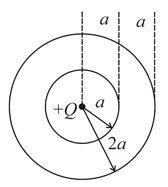Exercise 1
Embibe Experts Physics Solutions for Exercise 1
Simple step-by-step solutions to Exercise 1 questions of Electrostatics from Physics Crash Course MHT-CET. Also get 3D topic explainers, cheat sheets, and unlimited doubts solving on EMBIBE.
Questions from Exercise 1 with Hints & Solutions
Two charges and are placed at and on the axis. Another charge is taken from to , then the work done to do so
If a solid and a hollow conducting sphere have same radius then
A solid spherical conducting shell has inner radius and outer radius . At the center of the shell is located a point charge . What must the excess charge of the shell be in order for the charge density on the inner and outer surfaces of the shell to be exactly equal?

Two isolated metallic spheres of radii and are given equal charge, then the ratio of charge density on the surfaces of the spheres will be
The dimensional formula of linear charge density is
Assertion: No two electric lines of force can intersect each other.
Reason: Tangent at any point of electric line of force gives the direction of electric field.
The S.I unit of electric dipole moment is
The plates of a parallel plate condenser are being moved away with a constant speed . If the plate separation at any instant of time is , then the rate of change of capacitance with time is proportional to,
